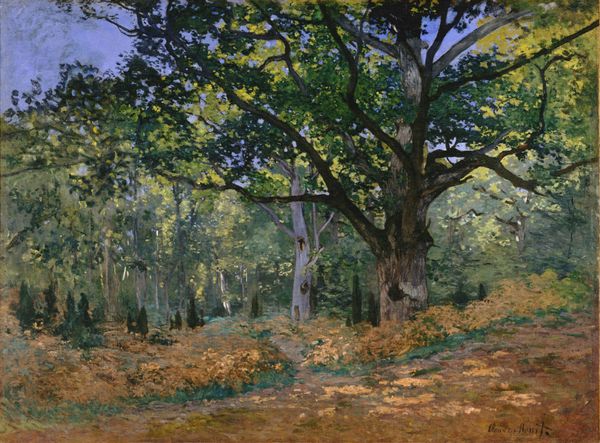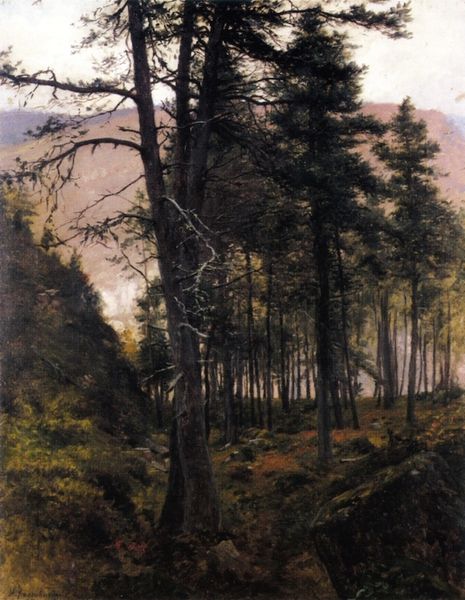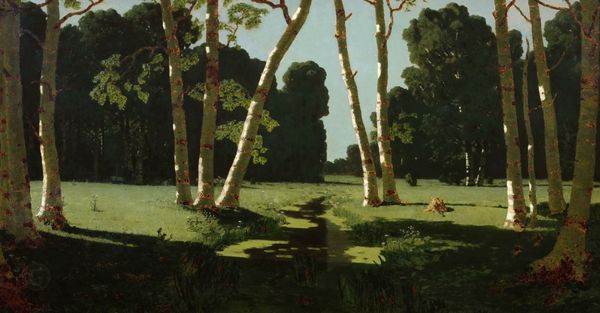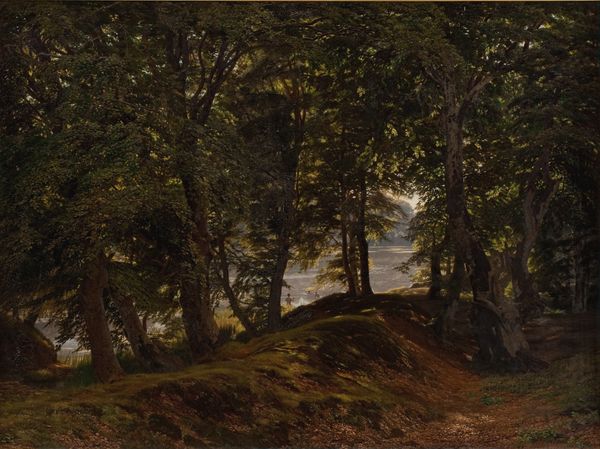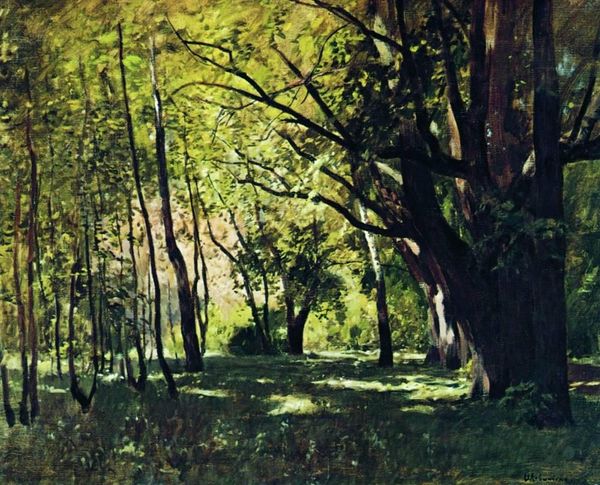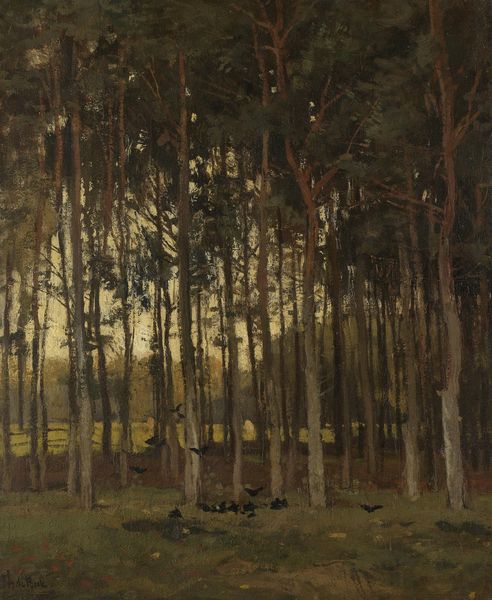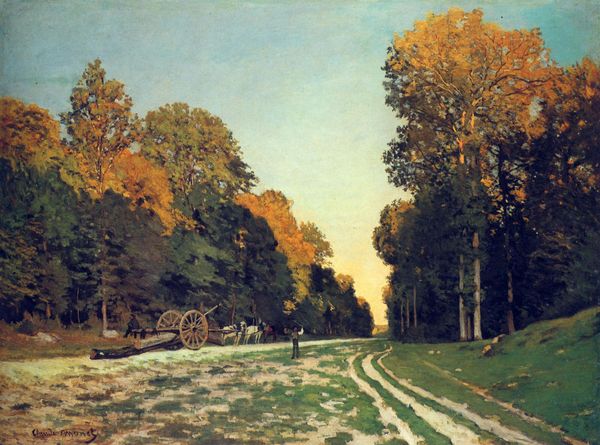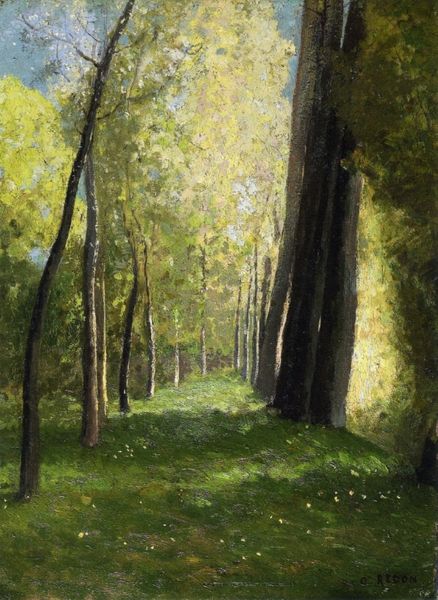
Copyright: Public domain
Editor: So, we're looking at Claude Monet’s "The Pave de Chailly in the Fontainebleau Forest," painted in 1865. It’s an oil painting, and something about it makes me feel like I’m standing on the edge of something, like a secret's about to be revealed. What catches your eye? Curator: Ah, Monet's early forest whispers a quiet revolution! The almost overwhelming darkness of the woods, pushed back by that vibrant clearing – it’s a tension that embodies the Romantic ideal clashing with Realist observation. Don’t you feel pulled in, despite the initial darkness? Almost dared to venture further? Editor: I do. It's almost a challenge. You said something about "Romantic ideal"? Curator: Well, think of earlier landscapes, the drama of sublime nature. Monet gives us that looming forest, that beckoning path—but renders it all with such an unvarnished eye. We are dealing with real trees, not stage props. But then there is this question in my mind: Where would you place this painting on the axis of Realism and Impressionism? Editor: Hmm...more towards Realism, maybe? It feels like he’s observing rather than interpreting, especially with the details in the foreground. Curator: Precisely! He’s not yet dissolved form into light entirely. But you see those brushstrokes, how they suggest rather than define? That's the seed of Impressionism taking root. For me, this painting shows us a critical hinge in art history. Editor: I see it now! It’s like Monet is wrestling with tradition while simultaneously forging something completely new. Curator: Yes! And perhaps that struggle *is* the most captivating part. It holds onto that balance – the yearning and the knowing. Editor: I never would have thought to look at a landscape and find such inner conflict being visualized. It’s brilliant, really.
Comments
No comments
Be the first to comment and join the conversation on the ultimate creative platform.


